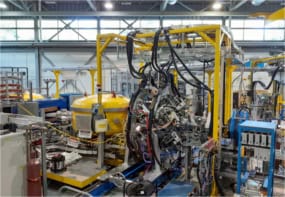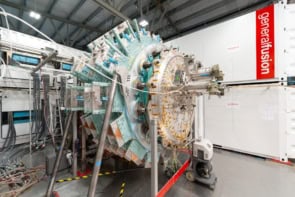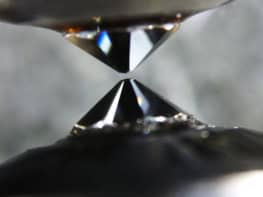
Back in April of this year we reported that researchers in Germany and Austria were the first to use a laser to excite a low-lying metastable nuclear state of thorium-229. Now an independent team in the US has repeated the feat. Their work is seen as important progress in the development of a solid-state nuclear clock.
Such a device could rival today’s best atomic clocks in terms of accuracy. But unlike atomic clocks, a thorium-based nuclear clock could be a completely solid state device (the best atomic clocks use trapped atoms or ions cooled to cryogenic temperatures).
As a result, nuclear clocks could be much easier to operate outside of metrology labs, where they could find a wide range of applications including precision measurements of Earth’s gravitational field. What is more, because the frequency of such a clock is defined by nuclear forces it could be used to identify physics beyond the Standard Model of particle physics.

Excitation of thorium-229 brings a working nuclear clock closer
The idea of a thorium-229 nuclear clock was first proposed in 2003, but it proved very difficult to make accurate measurements of the frequency of the light involved in the clock transition – something that is key to the development of a clock.
This year, the research has accelerated and now Ricky Elwell of the University of California, Los Angeles and colleagues are the second group to use a laser to excite the clock transition in thorium-229 nuclei embedded in a crystal lattice. What is more, the precision of their measurement of the transition frequency is about an order of magnitude better than that of the German and Austrian team.
Ewell and colleagues report their measurements in Physical Review Letters and the science writer Rachel Berkowitz has written an accompanying piece in Physics. She points out that the team has found that the crystal appears to affect the transition – which could be important for the development of nuclear clocks.



